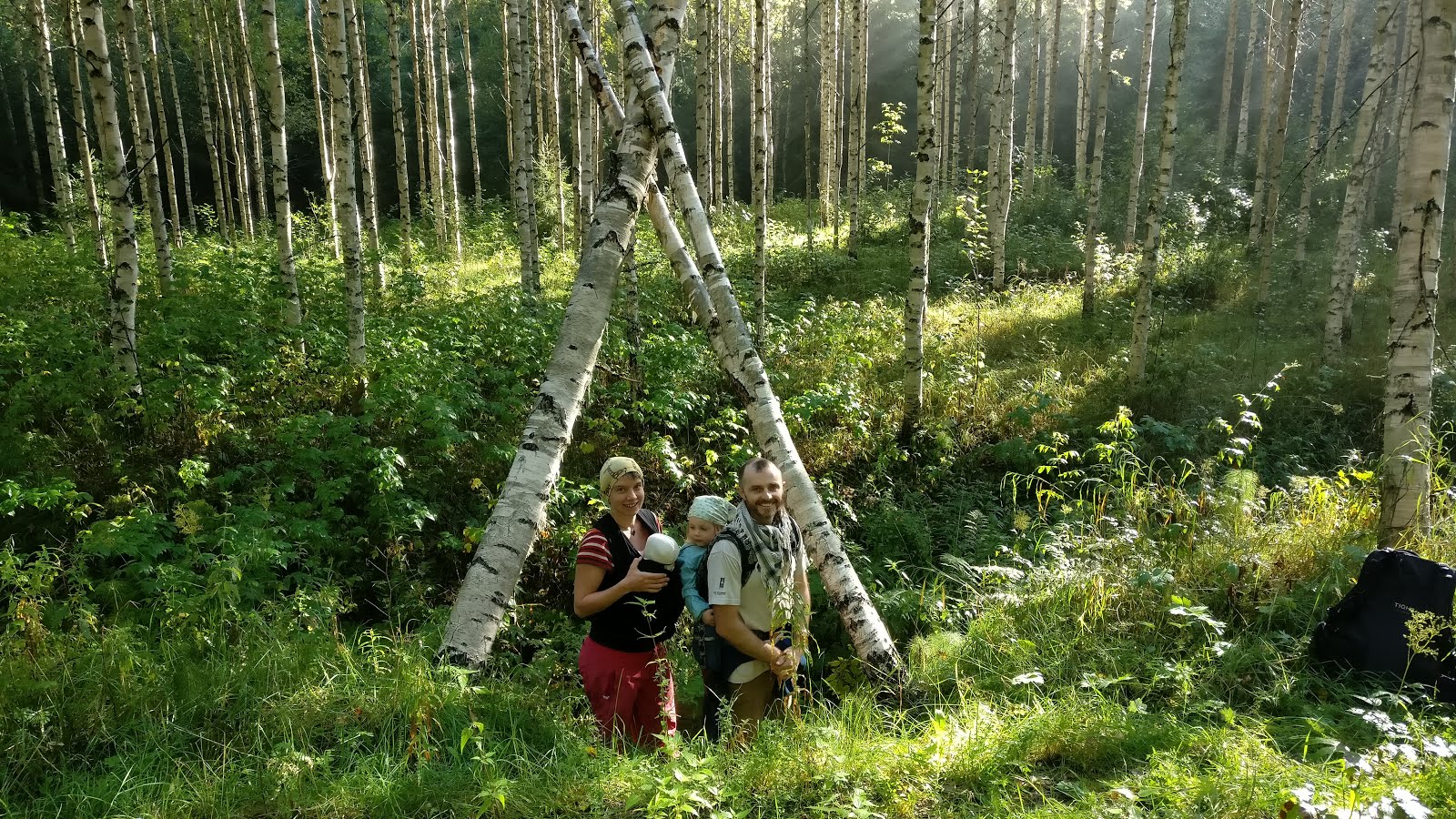From clearing the forest to become a road we had loads of wood that was too small for using for the building project so it was perfect for firewood. When we were clearing the road last year we cut the wood into the right length and piled beside the road in the forest. One of our projects this summer has been to collect the piles of wood (with a tractor and trailer) to the building site, splitting the fat ones thinner (with a splitter attached to the tractor) and then piling them above the ground to dry properly and finally we covered them with tin.
This is a job we have done the whole summer whenever we had the chance. It has taken a long time and about 10 different helpers and us have done it along the summer. Thank you every one!
For us the most ecological and economical option is to heat with wood so we will have an wood burning oven in the middle of the house. The plan is that this oven will heat the whole house. One can be quite self sufficient for firewood with 5 hectares of land since there is always trees that fall down in the wind or ones that can be thinned out. We also can use my dads fallen trees or thin his forest out from the parts that are close to our land. That we also did last winter cause we weren't sure do we have enough firewood. But now that we have it all splitted and piled we see we have loads! This will be enough for 3-5 years. To get the most heat energy out of firewood the best is to dry it for two to three years so that is why we are doing this all now, before we even have an oven to put it in.
